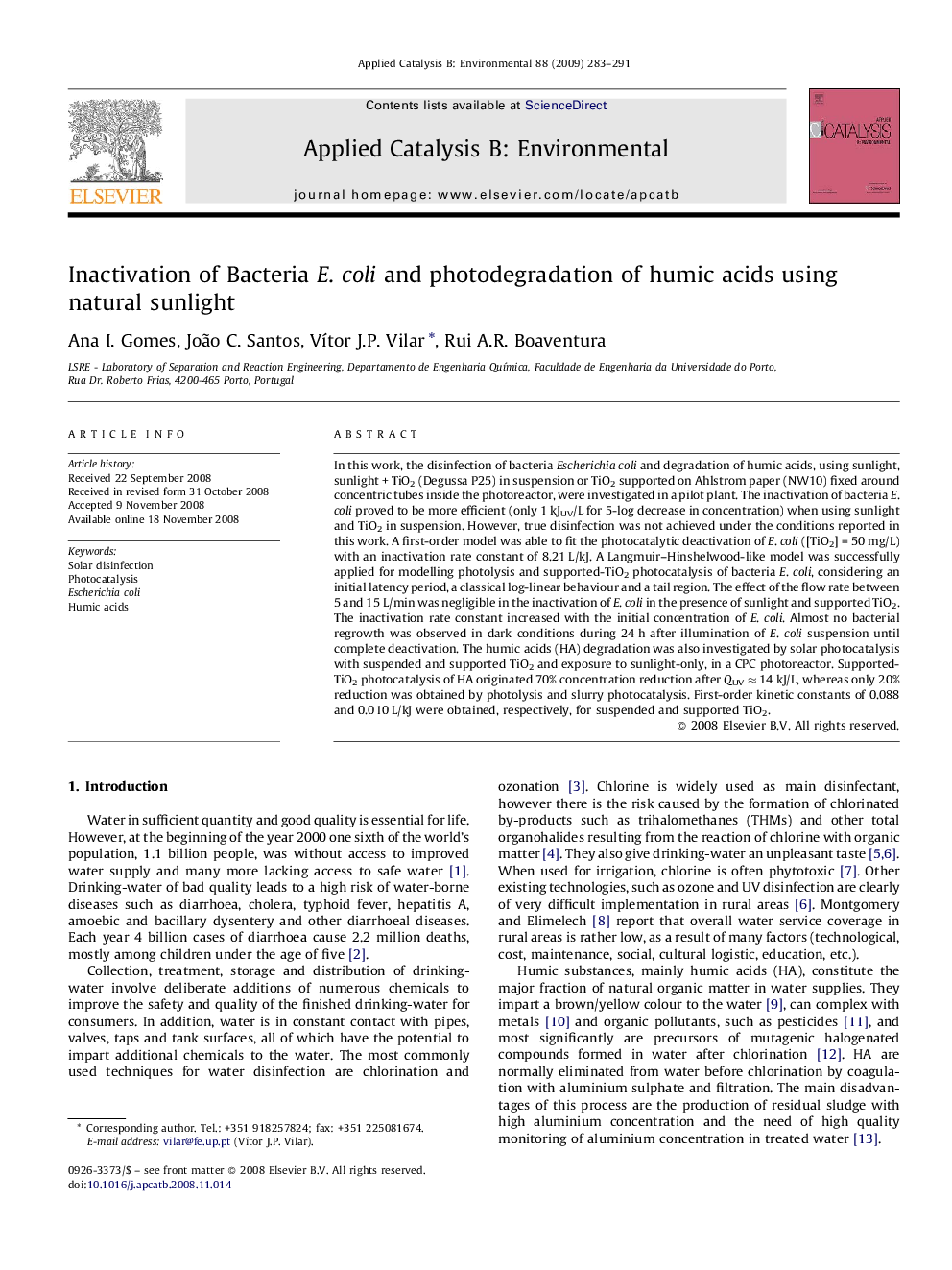| Article ID | Journal | Published Year | Pages | File Type |
|---|---|---|---|---|
| 47976 | Applied Catalysis B: Environmental | 2009 | 9 Pages |
In this work, the disinfection of bacteria Escherichia coli and degradation of humic acids, using sunlight, sunlight + TiO2 (Degussa P25) in suspension or TiO2 supported on Ahlstrom paper (NW10) fixed around concentric tubes inside the photoreactor, were investigated in a pilot plant. The inactivation of bacteria E. coli proved to be more efficient (only 1 kJUV/L for 5-log decrease in concentration) when using sunlight and TiO2 in suspension. However, true disinfection was not achieved under the conditions reported in this work. A first-order model was able to fit the photocatalytic deactivation of E. coli ([TiO2] = 50 mg/L) with an inactivation rate constant of 8.21 L/kJ. A Langmuir–Hinshelwood-like model was successfully applied for modelling photolysis and supported-TiO2 photocatalysis of bacteria E. coli, considering an initial latency period, a classical log-linear behaviour and a tail region. The effect of the flow rate between 5 and 15 L/min was negligible in the inactivation of E. coli in the presence of sunlight and supported TiO2. The inactivation rate constant increased with the initial concentration of E. coli. Almost no bacterial regrowth was observed in dark conditions during 24 h after illumination of E. coli suspension until complete deactivation. The humic acids (HA) degradation was also investigated by solar photocatalysis with suspended and supported TiO2 and exposure to sunlight-only, in a CPC photoreactor. Supported-TiO2 photocatalysis of HA originated 70% concentration reduction after QUV ≈ 14 kJ/L, whereas only 20% reduction was obtained by photolysis and slurry photocatalysis. First-order kinetic constants of 0.088 and 0.010 L/kJ were obtained, respectively, for suspended and supported TiO2.
